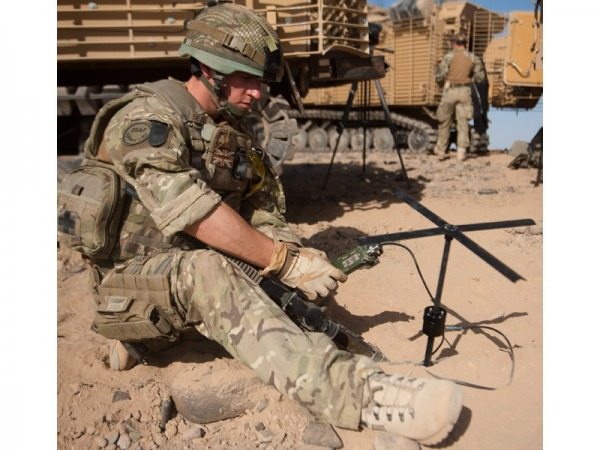For Staff Sgt. Stephen Kovac, getting important information and instructions to the rest of his platoon was a struggle.
He could radio back to higher headquarters and wait for the calls to filter back down, losing precious seconds during an operation. Or, he said, he could “yell and scream back to the rear, use hand and arm signals, anything possible to get it across.”
That was before Kovac began training with Capability Set 13, or CS 13, an integrated tactical network that extends digital communications down to the lowest echelons.
“Using CS 13, you can send reports and you can see reports from individuals on the ground in order to manipulate my team leaders and squad leaders,” the platoon sergeant said. “Even the lowest Joe can send me information, and get it to me within seconds.”
Kovac and hundreds of other Soldiers from the 3rd Brigade Combat Team, 10th Mountain Division (Light Infantry), are now training with CS 13 as they prepare for potential deployment to Afghanistan later this year. During the recent Mountain Peak training event here, Soldiers and leaders said the new capabilities would support their mission as a Security Forces Advise and Assist Team, or SFAAT, a formation that will be charged with working closely with Afghan National Security Forces to improve host nation capabilities and help the Afghans take on increasing responsibility for the security of their country.
While the Afghan forces will be taking a lead in operations, the extended, mobile network capabilities provided by CS 13 will allow the SFAAT units to support with situational awareness and needs such as calls for air support, artillery support, medical evacuation, or medevac, and other reach-back communications.
“As U.S. forces start to reduce our presence, we’re partnered with the Afghan security forces and continue to focus on their development, but we’re doing it over greater distances,” said Col. Sam Whitehurst, 3rd BCT commander. “Having this capability where I can take some of the capabilities to command and control the brigade on the move — that gives us the ability to extend our reach, even as we reduce our presence.”
Whitehurst’s BCT is the Army’s second brigade to field and train with CS 13, an advanced, mobile communications network that represents a significant upgrade over capabilities available in theater today. The Army’s first such integrated fielding effort, CS 13 will allow units to utilize advanced satellite-based systems — augmented by data radios, handheld devices and the latest mission command software — to transmit voice/chat communications and situational awareness data throughout the BCT.
At the command level, CS 13 equips brigade, battalion and company leaders with vehicles linked in to Warfighter Information Network-Tactical Increment 2, the backbone of the Army’s tactical communications network. Those vehicles allow commanders to leave their command posts and continue to issue orders, receive briefings and monitor the latest intelligence.
The integrated network also arms dismounted leaders like Kovac with smartphone-like handheld devices that pinpoint the locations of fellow Soldiers, and connect to lightweight radios to transmit data such as text messages, medevac requests and photos.
“In Afghanistan in 2003, we had to take our digital camera with us, and we had to take all this extra equipment that we had. Now you’re bringing it into a phone,” said Staff Sgt. Lee T. Hamberger, who used the handheld Nett Warrior system and Rifleman Radio during drills at Mountain Peak. “If I saw something suspicious, I would take a picture of it — basically anything we saw that could help with information for future patrols; they were able to have a better view of everything that was going on.”
The week-long, brigade-level training exercise marked a significant step forward in increasing Soldiers’ proficiency using integrated network equipment in an operational environment, Whitehurst said. The next stage for the BCT will be a Joint Readiness Training Center, or JRTC, rotation at Fort Polk, La., which will pose SFAAT scenarios with role players acting as host nation army, police, civilians and enemy insurgents. Recently, the 4th BCT, 10th Mountain Division (LI) concluded its own JRTC rotation as the first unit to utilize CS 13 in the SFAAT mission.
The next two BCTs to receive CS 13 fielding efforts, both from the 101st Airborne Division (Air Assault), are beginning new equipment fielding and training at Fort Campbell, Ky. With each integrated fielding effort, the units can adapt the equipment to their particular mission requirements.
“This tactical network will provide connectivity and situational awareness for any mission in any region,” said Col. Rob Carpenter, Army director of System of Systems Integration. “The idea is to provide scalable and tailorable equipment that is integrated across all levels, so it can be responsive to what the commander needs to execute mission command. You are seeing that now as the 10th Mountain Division brigades continue to train with the network’s capability during their exercises.”










